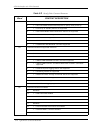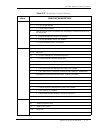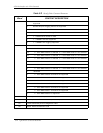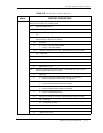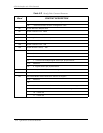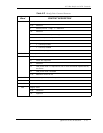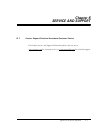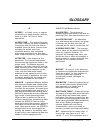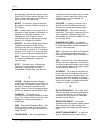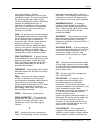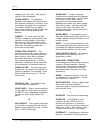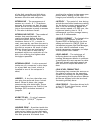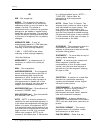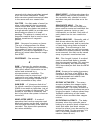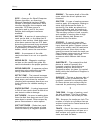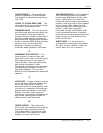
Glossary
G-2 Quickview 40 20/30/40GB AT
decimal digit, which may have a value
from 0 to 9. A bit is one of the logic 1or
logic 0 binary settings that make up a
byte of data. See also byte.
BLOCK – A sector or group of sectors.
By default, a block of data consists of
512 bytes.
BPI – Abbreviation for bits per inch. A
measure of how densely information is
packed on a storage medium. Flux
changes per inch is also a term
commonly used in describing storage
density on a magnetic surface.
BUFFER – An area of RAM reserved for
temporary storage of data that is
waiting to be sent to a device that is
not yet ready to receive it. The data is
usually on its way to or from the disk
drive or some other peripheral device.
BUS – The part of a chip, circuit board,
or interface designed to send and
receive data.
BYTE – The basic unit of computer
memory, large enough to hold one
character of alphanumeric data.
Comprised of eight bits. See also bit.
C
CACHE – Random-access memory
used as a buffer between the CPU and
a hard disk. Information more likely to
be read or changed is placed in the
cache, where it can be accessed more
quickly to speed up general data flow.
CAPACITY – The amount of
information that can be stored on a disk
drive. The data is stored in bytes, and
capacity is usually expressed in
megabytes.
CDB – Command Descriptor Block. The
SCSI structure used to communicate
requests from an initiator (system) to a
target (drive).
CLEAN ROOM – An environmentally
controlled dust-free assembly or repair
facility in which hard disk drives are
assembled or can be opened for
internal servicing.
CLUSTER – A group of sectors on a
disk drive that is addressed as one
logical unit by the operating system.
CONTROLLER – Short form of disk
controller. The chip or complete circuit
that translates computer data and
commands into a form suitable for use
by the disk drive.
CONTROLLER CARD – An adapter
holding the control electronics for one
or more hard disks, usually installed in
a slot in the computer.
CPU – Acronym for Central Processing
Unit. The microprocessor chip that
performs the bulk of data processing in
a computer.
CRC – Acronym for Cyclic Redundancy
Check. An error detection code that is
recorded within each sector and is used
to see whether parts of a string of data
are missing or erroneous.
CYLINDER – On a disk drive that has
more than one recording surface and
heads that move to various tracks, the
group of all tracks located at a given
head position. The number of cylinders
times the number of heads equals the
number of tracks per drive.
D
DATA SEPARATOR – On a disk drive
that stores data and timing information
in an encoded form, the circuit that
extracts the data from the combined
data and clock signal.
DEDICATED SERVO – A surface
separate from the surface used for data
that contains only disk timing and
positioning information and contains no
data.
DEFECT MANAGEMENT – A method
that is implemented to ensure long



